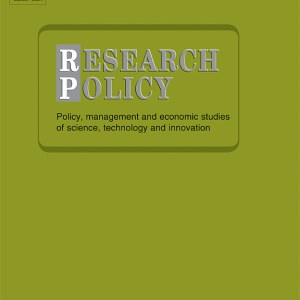
Bianchi, M., Murtinu, S. and Scalera, V. (2019). R\&D Subsidies as Dual Signals in Technological Collaborations Research Policy, 48(9):.
-
Affiliated author
-
Publication year2019
-
JournalResearch Policy
We investigate the influence of public R\&D subsidies on a firm's likelihood to form technological collaborations. Using signaling theory, we conceptualize the award of a subsidy as a pointing signal (i.e., indicating a quality attribute that distinguishes the signaler from its competitors), and the monetary amount raised through a subsidy as an activating signal (i.e., activating the quality attribute of the signaler). Drawing on the attention-based view, we investigate whether the relative salience of these signals varies between two types of signal receivers: academic and corporate partners. Using a panel sample of Spanish manufacturing firms, our results indicate that the two types of receivers attend to the two signals differently: while academic partners attend to pointing signals only (sent by the award of a selective subsidy), corporate partners react to the richer information that activating signals provide (sent by the monetary value of both selective and automatic subsidies). Our results are stronger for SMEs vis-à-vis large firms, and hold after controlling for endogeneity, selection bias, simultaneity, attrition, inter-temporal patterns in technological collaborations, and the substantive effects of subsidies. The theorized and tested dual nature of subsidy-enabled signals and their different salience to distinct partner types hold interesting implications for research on alliances, innovation policy, and signals.